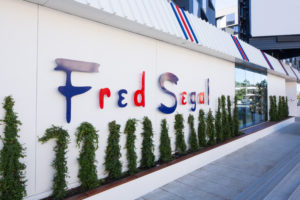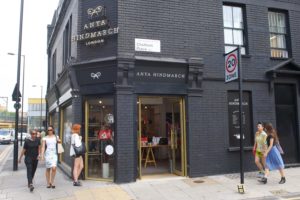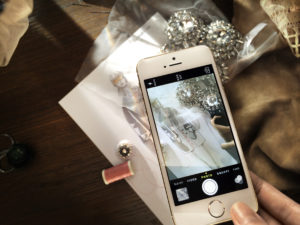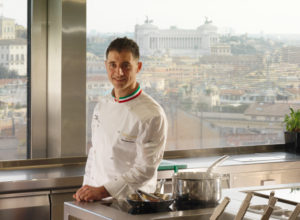Millennials, of course, but also out-of-the-box retail and Michelin dining on the street. A few trends that will tell you which way the luxury industry will roll this year.
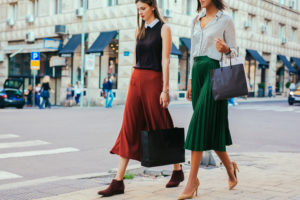
The Millennials hold the key
Every report, from a recent study by Bain & Co to Deloitte’s luxury reports tell you that Millennials hold the key to luxury buying. Bain reports a 4% growth for the first quarter of this year, with a projected 2-4% growth for the year—or €254 billion to €259 billion ($284 billion to $289 billion). Deloitte projects 99 million millennials now make up a larger segment of the luxury market. But this doesn’t mean that the earlier generation, the Boomers, are out of the picture. Deloitte’s report asserts that the boomers have higher spending power and greater impact on the market.
According to the Deloitte Fashion and Luxury Report, “Millennials were three times more likely to be driven by trend than older consumers and they were less defined by routine.” In fact, if the millennials stress on services and experiences, the boomers focus on objects and fashion.
Retail is back
Remember the time when everyone was talking about the death of the stand-alone store? Expensive real estate, especially in the luxury segment, the shifting consumer focus to online retail, and new technologies, threatened the very existence of a luxury boutique store, which, to an entire generation of shoppers was more than just a mere space to pick up accessories or clothes.
Luxury fashion retailer Fred Segal opened a new flagship store last year, after 25 years of being in business. He told Forbes in an interview, “Now, more than ever, the luxury consumer is looking for an experience. They don’t want the same shopping experience they’ve seen before; they want one-of-a-kind, hard-to-find items that no one else has; and they want to find it in an environment that isn’t replicated anywhere else.” Fred Segal has been offering experiential retailing to their customers through stores where they don’t just shop but also listen to music, eat amazing meals, and hang out with their friends.
London, world capital for luxury retail
London remains the world capital for luxury retail and a Global Luxury Retail report states that the city saw a total of 41 openings late year, against 36 in Paris and 31 in New York. CBRE and Walpole have also named London as the world‘s top destination for luxury retail, despite the threat posed by the impending Brexit.
Meanwhile in Paris, several luxury brands opened new stores, leading to a retail revival. Balenciaga’s third Paris standalone is on Avenue Montaigne, while LVMH chose to return to Maison Louis Vuitton Vendôme. And in India, luxury retail found a new home in the trendy shopping address around Jodhpur’s Toorji ka Jhalra stepwell, which has been restored under JDH: Urban Regeneration Project. Beautiful stores and interesting cafes have opened up in havelis and buildings that have been meticulously restored. Among them is Jaipur-based RASA that sells everything from evening wear to home furnishings; Andraab, a brand known for its range of shawls, scarves, stoles and spreads, and Nicobar, the breezy sibling of the storied Goodearth. The Goodearth ‘Moonhouse’ Boutique within this stretch resembles a souk with its Sufi-inspired collectibles. It has walls peppered with murals sporting Rumi quotes and flowing white lehengas inspired by the garments of the whirling dervishes.
E-commerce
There is no doubt that e-commerce will play a huge part in the revival of luxury across the world. Unlike in the rarefied world of luxury retail, online shoppers expect value-for-money, even in the luxury realm; beautifully packaged products delivered straight to their home; and loads of customization. According to the Bain report, 45% of luxury consumers are asking for personalized products and services. Even online, consumers may demand personalization to a high level, from targeted content, to adapting colors, typography and graphics to an individual’s tastes. Burberry has already begun allowing users to create customized make-up boards on Pinterest to promote its new beauty range. Even its Burberry Bespoke service online, enables users to customize their trench online.
Dining
Luxury is more than just fashion. Dining forms a huge part of the luxury experience. Expect to see more casual fine dining restaurants wooing the millennial luxury consumer. Michelin star dining has already gone causal, what with two street food stalls in Singapore acquiring one Michelin star each. The Hong Kong Soya Sauce Chicken Rice and Noodle and Hill Street Tai Hwa Pork Noodle are part of Singapore’s open-air ‘hawker’ street food vendors network, and serve food as cheap as at around USD 2. And they have a Michelin star for the quality and consistency of their offering.
Hotel Eden- Fabio Ciervo in his kitchen
The fine dining trend would also veer towards more sustainable, locally-sourced food, rather than exotic ingredients. House-made condiments, fermented products, ethnic spices, and millets will dominate the platter. For instance, Executive Chef Fabio Ciervo, of Rome’s Hotel Eden, which is part of the Dorchester Collection, believes that even the desserts will be healthier. At his La Terrazza, which was awarded a Michelin star, he ensures that the desserts he whips up use locally grown ingredients and are low on sugar. Alessandro Buffolino, head chef of Milan’s Hotel Principe di Savola, says that more restaurants will be offering vegan, or at least vegetarian cuisine, as a nod to the new-found passion for plant-based diet.

